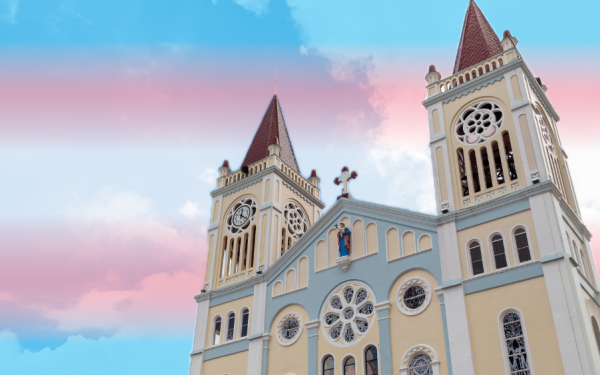A New Sexual Standard
The Nature of Relationships and Sexual Orientations Are Evolving
There are so many iconic representations of love, sex and desire embedded in our social consciousness, it’s hard not to get a picture of what it is well before we even start our own relationships.
When Harry Met Sally. “You Can’t Hurry Love” by the Supremes. Romeo and Juliet.
There are so many iconic representations of love, sex and desire embedded in our social consciousness, it’s hard not to get a picture of what it is well before we even start our own relationships. But what if what we want doesn’t fit the mould?
Role models are scarce for anyone deviating from heterosexual relationships, and even those who deviate from homosexual relationships, too. People who identify as polyamorous, bisexual or whose sexual orientation fluctuates end up confronting negative stereotypes from all sides.
But without any social expectations defining them, the rulebook for these kinds of relationships ends up being written by those in them. And for people working to further diversity and tolerance in our society, the variety of ways they see people defining themselves are staggering.
“Nothing surprises me,” said Marla Schreiber, a Concordia graduate who leads workshops at the local not-for-profit group Ensemble to promote diversity. “At the end of the day people really are re-inventing the wheel in many ways.
Because all of a sudden it’s not just masculine or feminine—people are finding ways of playing within the roles of gender and sexuality.”
Schreiber added that sometimes, experiences or people who come into our lives set us on a different path and create a kind of “sexual fluidity” during our lifetimes. In one workshop, she described an intense moment where one participant asked if being sexually assaulted by a man could make someone never want to be with a man again.
While negative past experience may be one of the factors which leads to sexuality fluctuations, new experiences can prompt the same changes.
“When I was attracted to women, I was still attracted to men,” said artist Shaista Latif, who self-identifies as a queer woman. “But it wasn’t until I decided to act on my impulses to see what it was like that my feelings for men went away.”
Latif has been “out” to people in her life for about a year. But within the performing community, it has been closer to two months.
Being Afghan has made it even more stressful for her to out herself. She’s a rare sight onstage from that conservative community, and audience members will track her down after her shows, so she feels accountable to them to a degree. She’s still a bit at odds with her new identity.
“I don’t feel entirely proud waving a rainbow flag, but I’m comfortable enough to call myself a queer woman, or artist,” Latif said. “But in this world, I don’t think it’s necessary for people to label themselves. Why? Why bother. I don’t understand.”
Schreiber agrees that the definitions coming from the mainstream leave a lot to be desired. “Television tells us that homosexuality exists, but it tells us that it exists in very specific kind of way,” Schreiber said. “I also do workshops on polyamory and part of why I do that is to talk to the norm—to talk to the people about other ideas that are out there. Because if you’ve never heard of it, and you can’t fathom it on your own, this ignorance sort of continues.”
Schreiber herself has been living what she calls “the poly life” for almost ten years. It started when she was in CEGEP, where she said that polyamory was an unheard-of concept. But one ethics teacher was living a polyamorous lifestyle and she credits him with “opening her eyes.”
She said that once she decided to pursue this lifestyle, there weren’t any templates for how to model her relationships based on what she saw in society.
Today, one man has been her partner for eight years and another man for three years. The way they make it work is by constantly communicating and setting, then re-setting their boundaries and values.
She had told her partner of eight years earlier in their relationship that she could love many people, but would only ever be “in love” with him.
“Then I fell ‘in love’ with someone else,” she said. “So it created this whole new space where everybody had to meet and we had to work together to make it work within this new context.”
But open-mindedness towards these emerging relationship styles from established communities can still be a struggle. “I definitely experienced judgment,” Schreiber said. “A lot of people assume that polyamory means that you’re super easy.”
There was a period when Latif was primarily attracted to men, then she was attracted to both genders before identifying as queer. She noticed a stigma surrounding bisexuality.
“There is a lot of misogyny and difficulty and judgment within the queer circle when you identify in certain ways. A lot of gay people don’t take bisexuals seriously. Because they think [bisexuals] want a boy on one arm and a girl on the other arm, and I don’t think that’s really fair to say.”
Both Schreiber and Latif stress that people misjudge their own ability for sexual fluidness, and that identifying one way at the early stages of one’s life does not mean that they always will.
“We as human beings identify beauty, charm, charisma and everything in people,” Latif said. “To say that we’re not attracted to a certain gender is a falsity.”

_561_520_90.jpg)
_600_832_s.png)

ed1_600_375_90_s_c1.jpg)

_(1)_600_375_s_c1.png)
